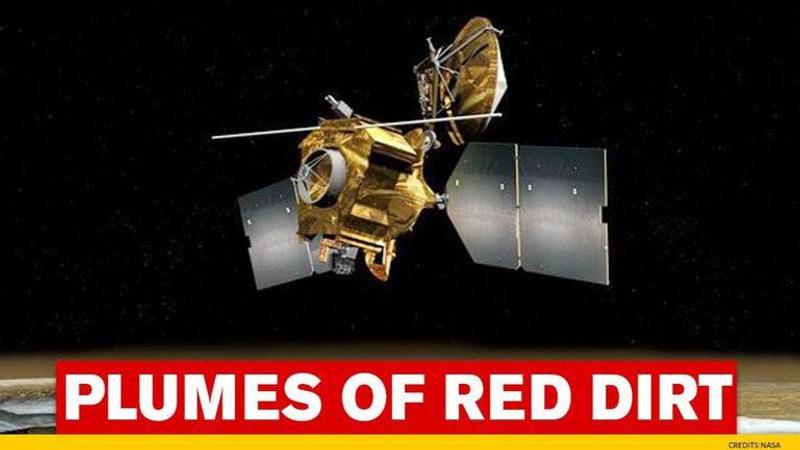Published 11:18 IST, August 18th 2020
NASA’S oldest spacecraft MRO captures spectacular dark avalanche on Mars
NASA provided a glimpse into the phenomenon on the Red planet as large chunks of material collapses downward from a tall structure on Mars.

NASA’S oldest spacecraft Mars Reconnaissance Orbiter (MRO) has captured a spectacular dark avalanche on Mars’ 1,640-foot-tall (500-meter-tall) cliff. In an Image taken earlier but released by the space agency on the 15th anniversary of the spacecraft, NASA provided a glimpse into the phenomenon on the Red planet as large chunks of material collapses downward from a tall structure in Mars’ north pole during the spring. “As temperatures increase and vaporize ice, the destabilized ice blocks break loose and kick up dust,” NASA explained in a release.
NASA’s Mars Reconnaissance Orbiter MRO is one of the oldest spacecraft to scrutinize the Red Planet. "Every spring, the sun shines on the side of the stack of layers at the north pole of Mars known as the north polar layered deposits. The warmth destabilizes the ice, and blocks break loose," scientists wrote about the MRO. Explaining the Avalanche on Mars, they said, when the MRO reaches the bottom of the more than 500-meter-tall [1,650 feet] cliff, “ blocks kick up a cloud of dust.”. It added, “The layers beneath are different colors and textures depending on the amount of dust mixed with ice."
The newly released image of the Avalanche was captured by NASA on May 29 with the help of a telescopic camera, using the High-Resolution Imaging Science Experiment (HiRISE). The spacecraft was first launched in March 2006 on a $720 million worth mission. Apart from MRO, there are two other orbiters, NASA's Mars Odyssey and MAVEN on Mars, exploring the Red planet.
NGC 1614 image released
Earlier, NASA and European Space Station released a ‘stunning’ photograph of an eccentrically shaped galaxy known as the NGC 1614 captured by NASA’s Hubble Telescope. In an official statement, NASA revealed that the galaxy abounds in several activities was over 200 million light-years from Earth was spotted nearby Eridanus, a celestial river located in the southern constellation. The sixth-largest constellation, Eridanus, includes Achernar, one of the brightest stars in the sky, the star Epsilon Eridani, the Eridanus Supervoid, the largest void known in the universe.
[NASA's MRO, Reconnaissance Orbiter launched on Mars Mission in 2006]
Updated 11:18 IST, August 18th 2020




